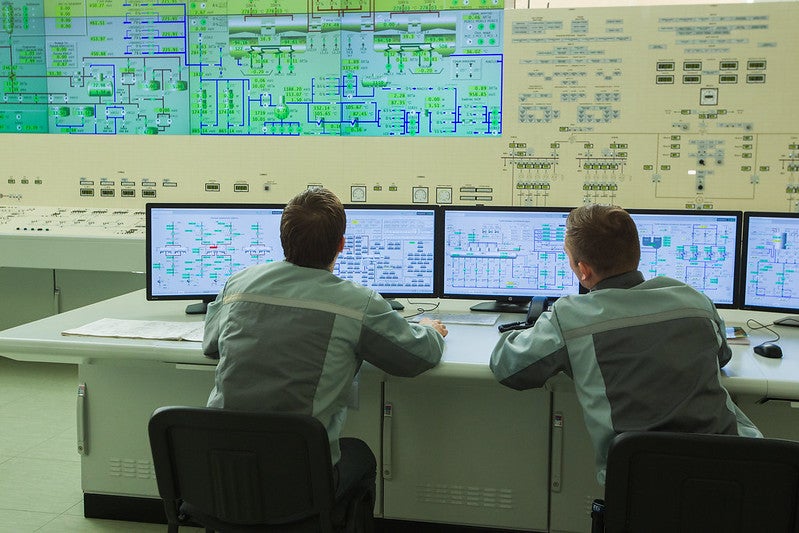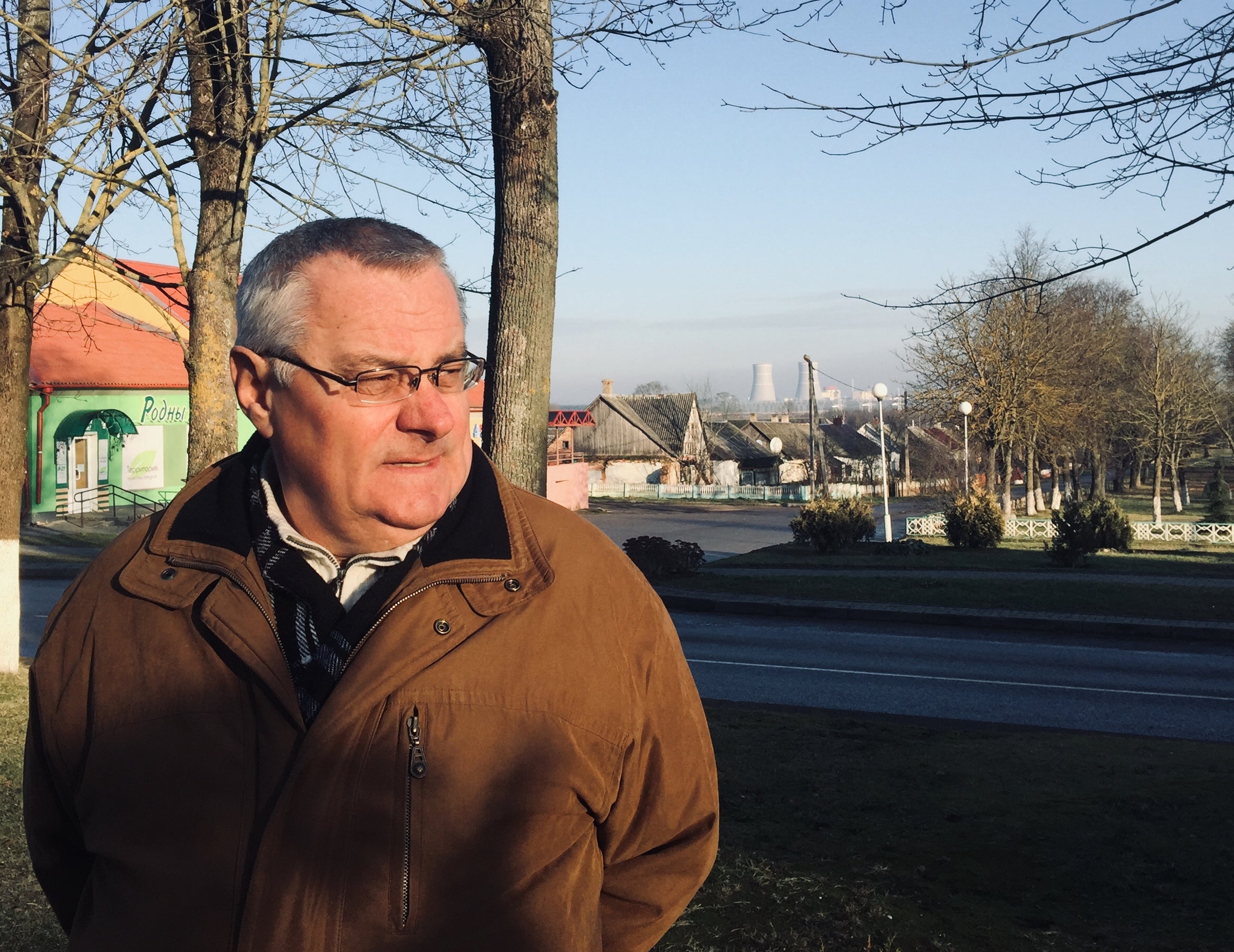‘They may not tell you the whole truth’: Fears of another Chernobyl as Russian-built atomic power station set to open in Belarus
Three decades after world's worst nuclear disaster, the country most affected by the fall out is set to open its first nuclear plant. But as Oliver Carroll finds out, not everyone is pleased


Your support helps us to tell the story
From reproductive rights to climate change to Big Tech, The Independent is on the ground when the story is developing. Whether it's investigating the financials of Elon Musk's pro-Trump PAC or producing our latest documentary, 'The A Word', which shines a light on the American women fighting for reproductive rights, we know how important it is to parse out the facts from the messaging.
At such a critical moment in US history, we need reporters on the ground. Your donation allows us to keep sending journalists to speak to both sides of the story.
The Independent is trusted by Americans across the entire political spectrum. And unlike many other quality news outlets, we choose not to lock Americans out of our reporting and analysis with paywalls. We believe quality journalism should be available to everyone, paid for by those who can afford it.
Your support makes all the difference.It was when the tree fellers arrived in early 2009 with their bulldozers that Nikolai Ulasevich, a local activist, knew the game was up.
It was when the tree fellers arrived in early 2009 with their bulldozers that Nikolai Ulasevich, a local activist, knew the game was up. In authoritarian Belarus those decisions rarely have a reverse gear.
In the years that followed, Ulasevich watched as the gigantic cooling towers and system blocks of Belarus’s first nuclear power station took shape. Construction, which was led by the Russian state nuclear agency Rosatom, would be far from straightforward. A string of incidents allegedly delayed its opening, but the first reactor is finally due to go online early 2020.
To say the construction of the Belarusian nuclear plant has been controversial would be to trivialise the history of these lands.
Chernobyl lies only seven miles from Belarus’s southern border, and the nuclear accident, still the world’s worst, has left the deepest of scars locally. The direction of the wind in spring 1986 – and the Soviet authorities’ decision to avoid major harm in Moscow – meant Belarus suffered more than any other region in the union. At the moment that the radioactive clouds moved towards the capital, air force pilots were ordered to chase down the toxic clouds and seed them with jets of silver iodide.
Much of the southernmost region of Homel remains seriously contaminated, with elevated oncology levels as a result.
Any local over 50 can recall what they were doing on those dry, spring-summer days. They talk about the tiredness; the strange, dryness of the mouth; the rumours that it might be a good idea to take iodine, but the lack of reliable information. They will also tell you about a cloud of secrecy almost as harmful as the black cumulus masses that had their radioactive bowels emptied over southern Belarus.
“It was only later that panic had a chance to set in,” remembers Maria Ivanovna, a local hotelier who declined to give her surname. A resident of Astravets (Russian: Ostrovets), the main town serving the nuclear plant 10 miles down the road, she says locals were evenly split about the project. Many are delighted with above-average wages and improvements to local infrastructure – especially the newcomers who have tripled the population since work began. There is a new sports centre, hospital and road connecting to the Minsk-Vilnius motorway. But her generation is “uneasy”, she says.
“The thought of what happened back in 1986 can’t fail to make you anxious about what may happen. You know they may not tell you the whole truth.”
Lithuania, the European nation that borders Belarus just 10 miles west of Astravets, is bitterly opposed to the nuclear plant. It says it has not been properly consulted and claims the plant breaches post-Fukushima distance guidelines – in particular, a recommendation that nuclear power stations should not be built closer than 100km of major conurbations. The new nuclear plant lies just 30 miles east of the Lithuanian capital, Vilnius. A spokesperson for Rosatom told The Independent: "The reactors being used are among the safest in the world and designed to risk the possibility of even the most unlikely event such as a plane strike. The plant design has been approved by International regulators and watchdogs, including the IAEA, ENSREG and others, and the most up to date legally binding set of regulation does not specify any requirements regarding distances between nuclear power plants and cities", he added.

The Lithuanians say they are preparing for any eventuality: from stockpiling iodine tablets to opening up nuclear bunkers and issuing survival notes to their citizens. In October, authorities ran a major preparedness operation, imitating a disaster response to a nuclear meltdown. The drills were knowingly hyperbolic. But several reported incidents do give pause for thought.
From what we know, there have been at least two health and safety events connected to reactor vessels planned to be included in the plant. The first was in July 2016, when it was apparently dropped from a crane during installation. Belarusian authorities took weeks to admit a “minor” incident. Five months later, the casing of the replacement reactor vessel collided with a railway pylon while being transported. At least five workers have died in construction accidents. There was at least one fire incident in the control room.
The outside world would likely have stayed little the wiser were it not for the opposition activist Ulasevich monitoring from his modest home, which he shares with his wife, a few chickens and sheep, three miles away from the new power station. He said he heard about the alleged dropped reactor vessel in conversation with a local construction worker.
“He swore that he saw it break free of ropes at a height of two or three metres,” he says.
The Independent has not been able to independently verify this claim. A spokesperson for Rosatom tells The Independent that allegations about safety issues are “entirely without merit” and that safety has always been and remains Rosatom's first and utmost priority. The spokesperson denied that the reactor vessel had been dropped, and explained that the outer layer of the protective packaging connected with a pylon, which Rosatom says barely caused a scratch; he said its investigation was overseen by the national regulator. He also denied that the incidents referred to in our piece caused delays to the construction of the plant.
“Anti-nuclear scaremongering doesn’t help to fight climate change”, the spokesman says, “and it appears to be only devised to protect the profits of the fossil-fuel energy sector in the region”.
Others are not so sure. Yury Voronezhtsev, the man who led the official Soviet official response to Chernobyl, says he could not believe any statement that the plant was “safe”.
“I don’t believe that our Belarusian construction workers are any better than the Soviet ones,” he tells The Independent. “We have the same people, and the same systems. Don’t forget that Anatoly Aleksandrov, the physicist who designed Chernobyl, assured us his plant was so safe it could be built on Red Square. His confidence did not age well.”
Mr Voronezhtsev says it is “sad” that Belarusian authorities pressed ahead with the project given the sensitivity of the issue locally. There is no obvious justification for a power station given that Belarus had no need for extra capacity, he adds.
Belarus says the power station will be used to meet domestic power needs. But it seems likely that part of the initial plan was to sell electricity to neighbouring Baltic countries, which remain plugged into the Russian grid. A decision by Lithuania to outlaw buying “dirty” electricity from the plant has undermined such rationale.
Instead, the project looks set to pull Minsk ever closer into Moscow’s embrace. Russia is providing the bulk of the financing for Astravets’ £8bn price tag, will be the sole supplier of fuel and will deal with the radioactive waste. The power station plans were signed in a different era, at a time before Russia had expanded its military, annexed Crimea or pushed Belarus along a path of forced deep integration. Now, such dependence is taking on a different significance.
“This is part of a much larger game,” says Ulasevich. “The aim is to develop reliance in all the countries of Moscow’s immediate geography – whether by gas, oil or Rosatom. Belarus has simply sleepwalked into the trap.”
*** This article has been updated to include additional comment by Rosatom and a note that the plant design has been approved by International regulators and watchdogs.
Join our commenting forum
Join thought-provoking conversations, follow other Independent readers and see their replies
Comments